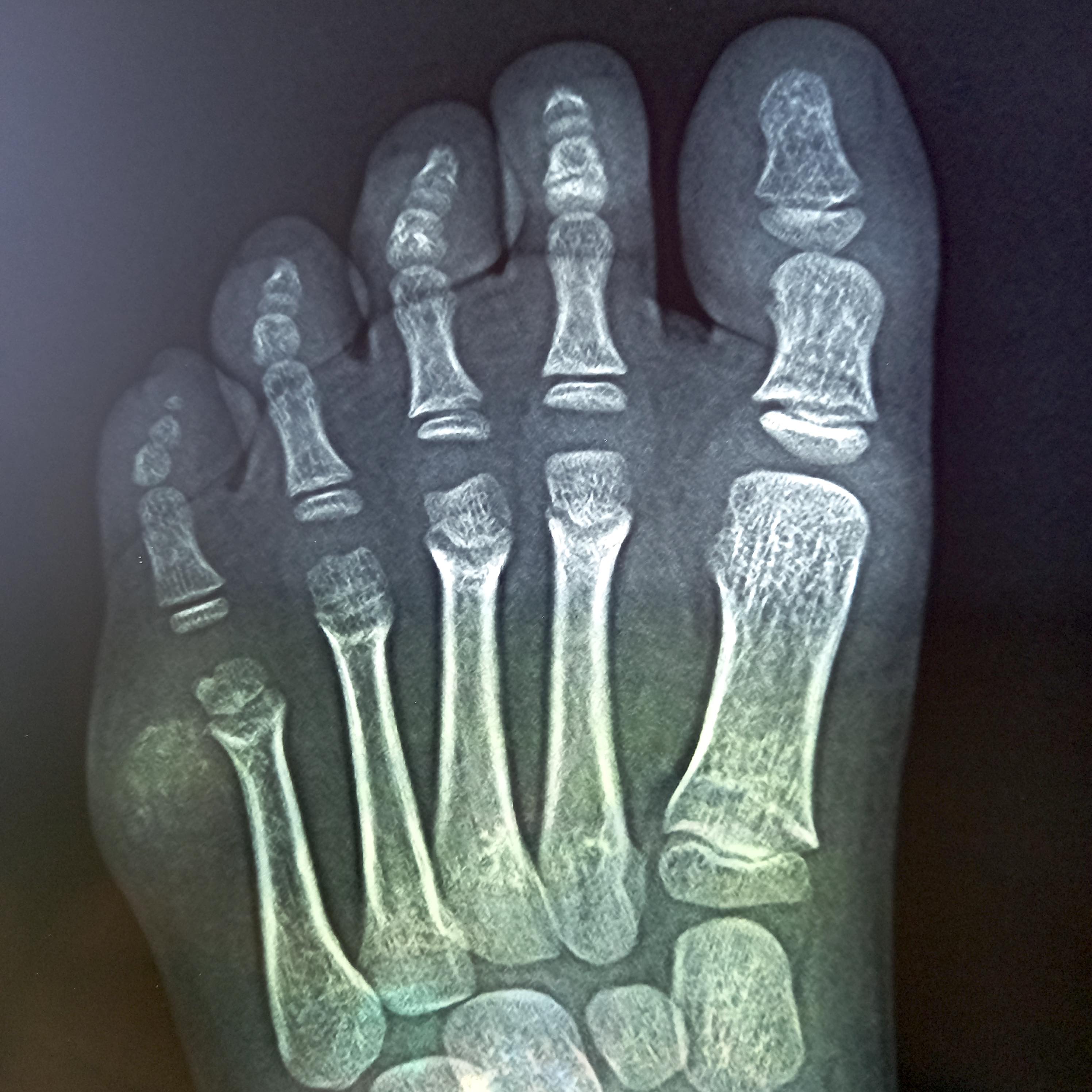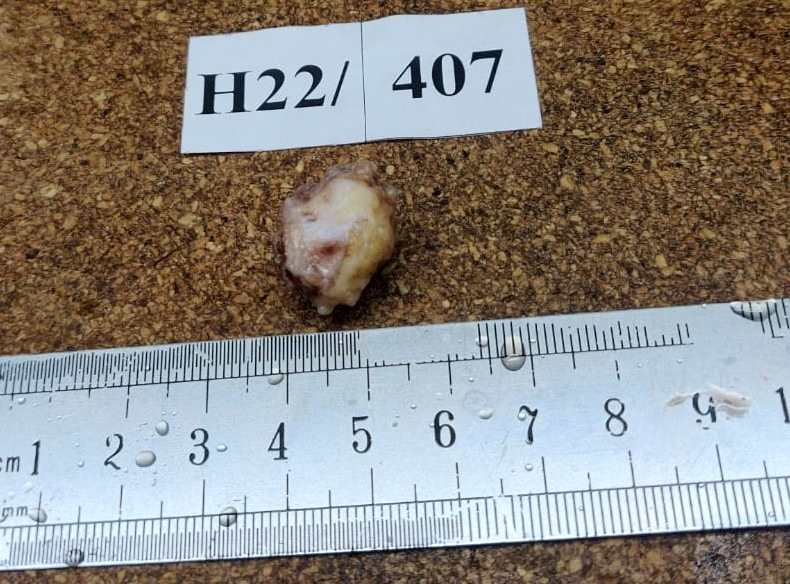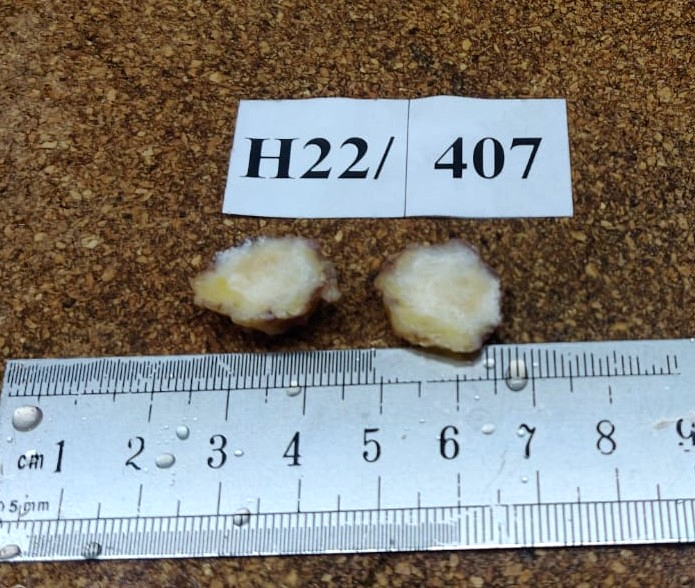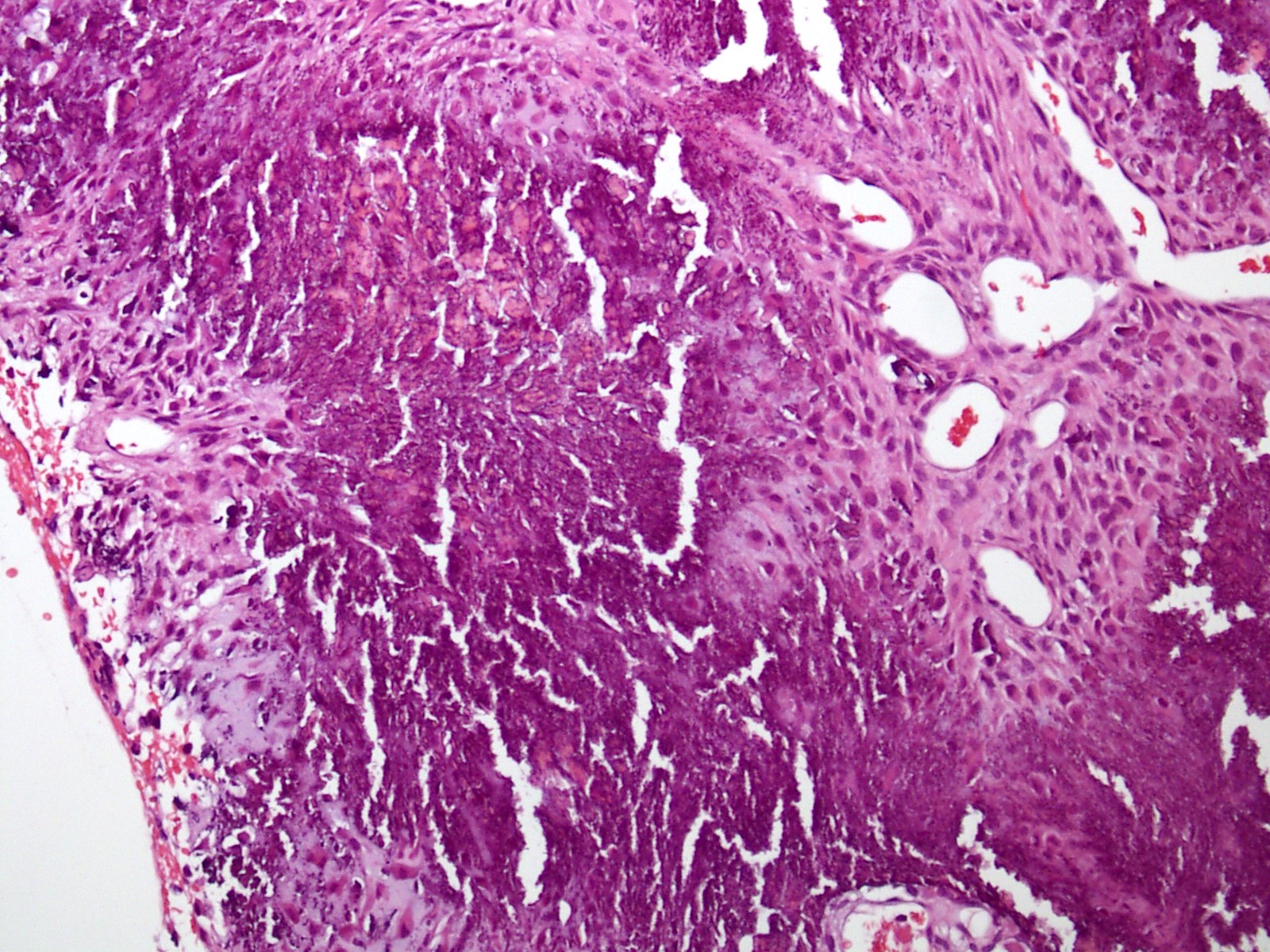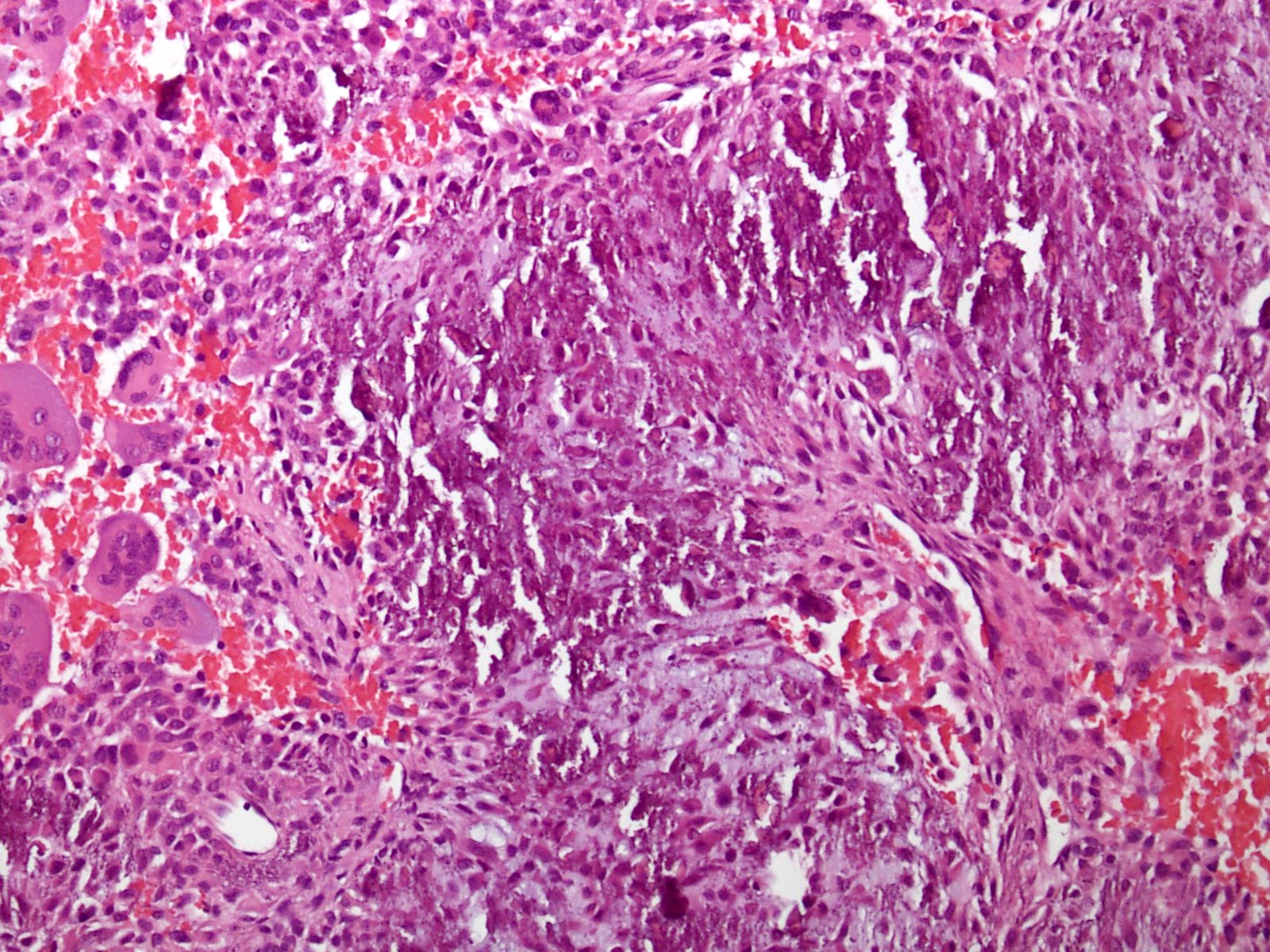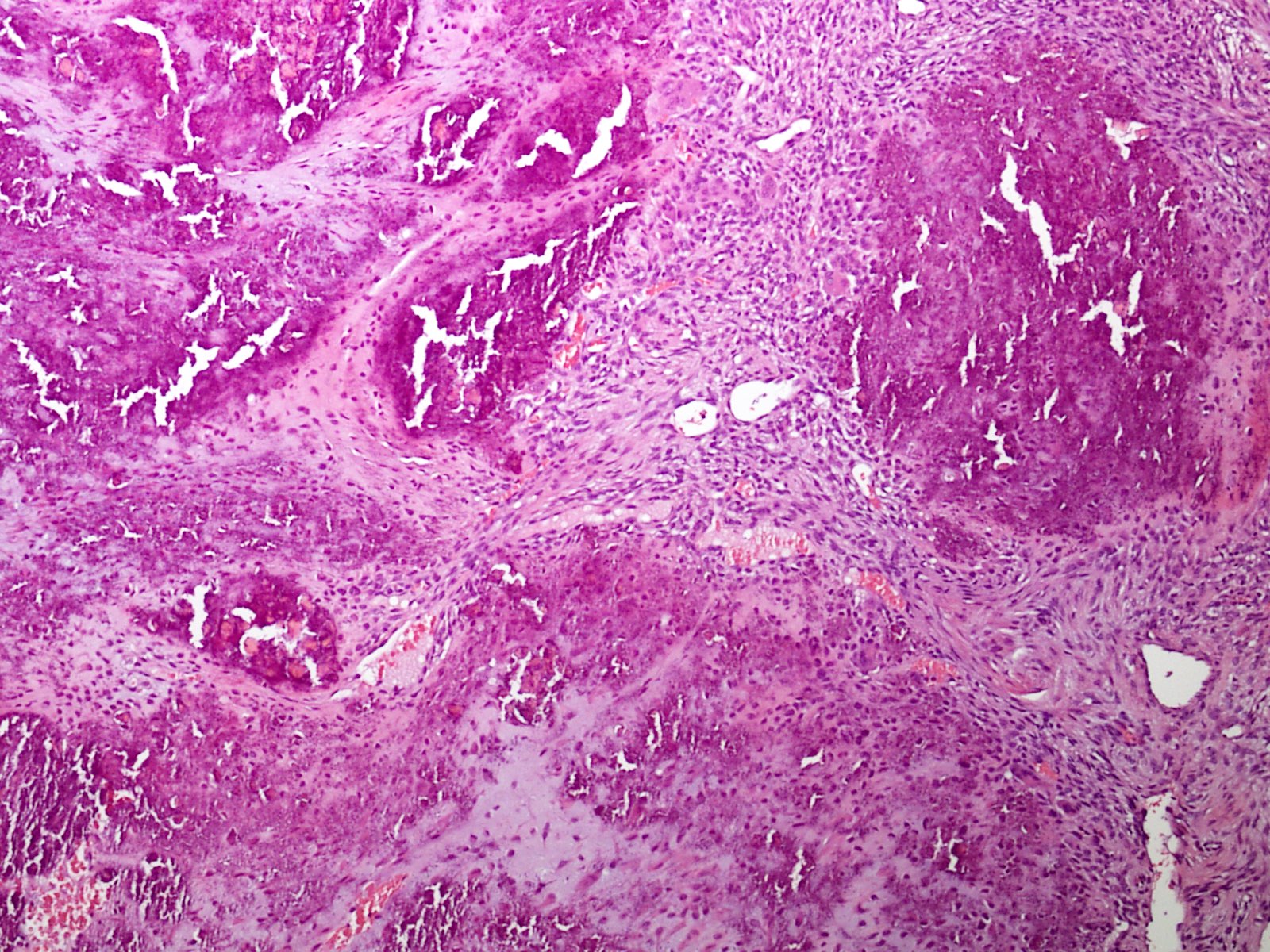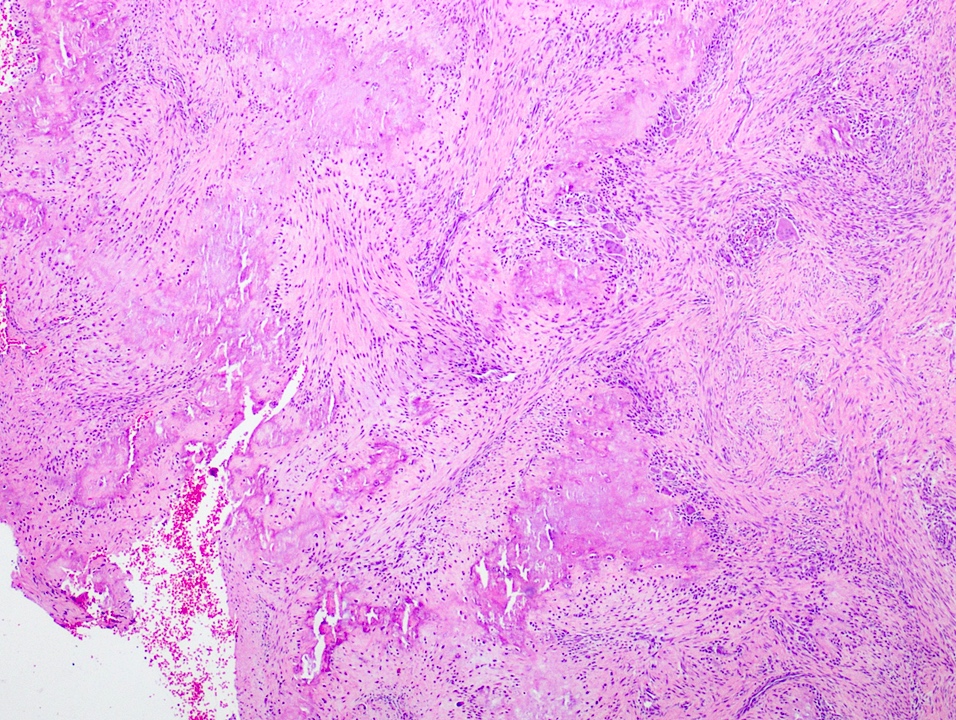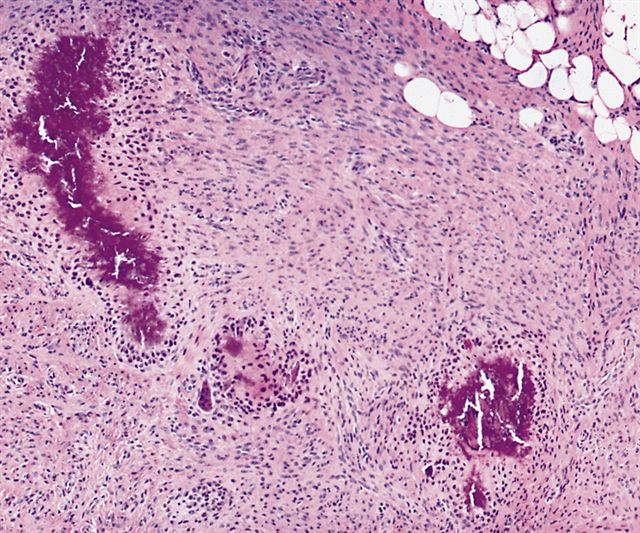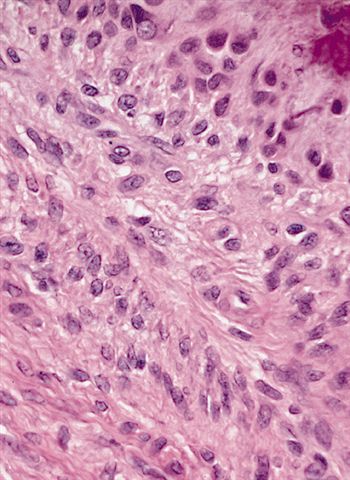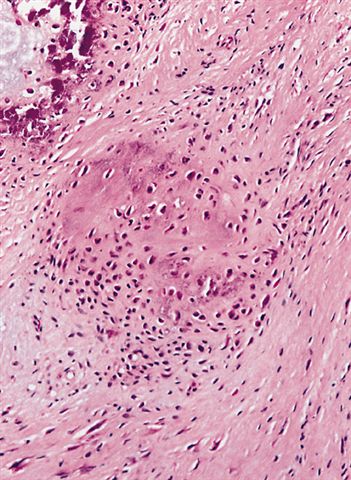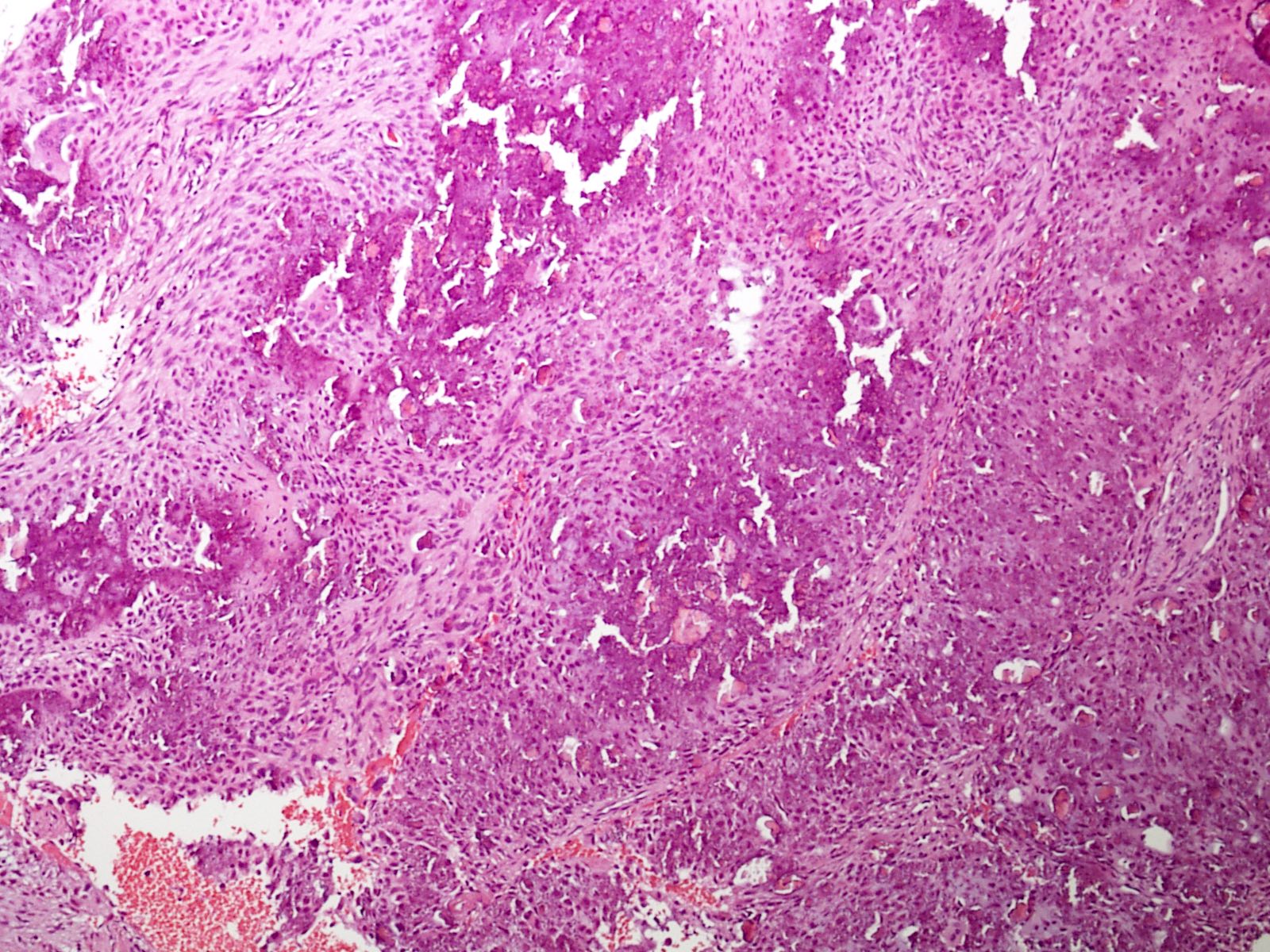Table of Contents
Definition / general | Essential features | Terminology | ICD coding | Epidemiology | Sites | Pathophysiology | Etiology | Clinical features | Diagnosis | Radiology description | Radiology images | Prognostic factors | Case reports | Treatment | Clinical images | Gross description | Gross images | Microscopic (histologic) description | Microscopic (histologic) images | Cytology description | Positive stains | Negative stains | Molecular / cytogenetics description | Molecular / cytogenetics images | Videos | Sample pathology report | Differential diagnosis | Additional references | Practice question #1 | Practice answer #1 | Practice question #2 | Practice answer #2Cite this page: Ashfaq Z, Anjum S, Ud Din N. Calcifying aponeurotic fibroma. PathologyOutlines.com website. https://www.pathologyoutlines.com/topic/softtissuecalcifying.html. Accessed September 16th, 2025.
Definition / general
- Rare tumor of children and adolescents, that involves the distal extremities, in association with aponeuroses, tendons and fascia
- Characterized by bland spindle cells and less cellular zones of calcifications that have epithelioid to plump fibroblasts
Essential features
- Infiltrative lesion composed of bland spindle cells within a collagenous matrix
- Calcified areas that contain epithelioid fibroblasts or scattered giant cells
Terminology
- Juvenile aponeurotic fibroma
ICD coding
- ICD-O: 8816/0 - calcifying aponeurotic fibroma
Epidemiology
- Rare benign fibroblastic tumor
- Usually occurs in children < 15 years old
- Cases in adults have been reported (Medicine (Baltimore) 2021;100:e26803)
Sites
- Most commonly occurs on the palmar aspect of hands and fingers, followed by plantar aspect of feet and toes (Cancer 1970;26:857)
- Wrists and ankles are less commonly involved
- Unusual locations include the proximal extremities and trunk (Hum Pathol 1998;29:1504)
- Rare examples are documented in head and trunk regions
Pathophysiology
- Unknown
Etiology
- Unknown
Clinical features
- Presents as painless, poorly circumscribed soft tissue swelling of prolonged duration
- Propensity to recur
Diagnosis
- Appropriate clinical, radiological and histological examination
Radiology description
- Xray and ultrasound may show nonspecific soft tissue mass with variable extent of fine stippled calcifications (Radiographics 2009;29:2143)
- CT scan: optimal for evaluation of calcified areas
- MRI: superficial, ill defined, subcutaneous soft tissue mass with a tendency to infiltrate or adhere to surrounding tissues
Radiology images
Prognostic factors
- Benign but locally aggressive
- Due to infiltrative nature, local recurrences may occur
Case reports
- 4 year old girl with calcifying aponeurotic fibroma of Achilles tendon (Radiol Case Rep 2020;15:753)
- 8 year old boy with calcifying aponeurotic fibroma of right elbow (J Med Invest 2011;58:159)
- 8 year old girl with calcifying aponeurotic fibroma of right thigh (Int J Surg Case Rep 2020;69:96)
- 44 year old man with calcifying aponeurotic fibroma of distal phalanx (J Plast Reconstr Aesthet Surg 2013;66:e47)
- 52 year old man with multiple calcifying aponeurotic fibromas in the aponeuroses and fascia of the head, neck, trunk, upper and lower extremities (Ter Arkh 2018;90:91)
- 74 year old woman with calcifying aponeurotic fibroma involving the posterior tibialis tendon (Medicine (Baltimore) 2021;100:e26803)
Treatment
- Complete surgical excision is warranted
Clinical images
Gross description
- Ill defined firm mass with variable grittiness
- Usually ≤ 3 cm
Gross images
Microscopic (histologic) description
- Fibromatosis-like, infiltrative and nodular calcified components
- Infiltrative cellular component is composed of uniform plump spindle cells
- No significant nuclear atypia or mitoses are seen
- Calcified hypocellular component is either hyalinized or shows chondrocytes
- Osteoclast-like giant cells are usually present
- Lesion infiltrates the surrounding soft tissue
Microscopic (histologic) images
Contributed by Nasir Ud Din, M.B.B.S., Nazmul Baqui, M.B.B.S., M.D. and AFIP
Cytology description
- Cytologic examination reveals benign appearing spindled cells, chondroid cells, multinucleated giant cells and calcific debris (Diagn Cytopathol 2001;24:336)
Negative stains
Molecular / cytogenetics description
- In cases lacking calcification, FN1::EGF gene fusion is detected (J Pathol 2016;238:502)
Molecular / cytogenetics images
Videos
Calcifying aponeurotic fibroma
Sample pathology report
- Left hand, swelling, excision:
- Calcifying aponeurotic fibroma (see comment)
- Comment: Histology showed a lesion composed of bland spindle cells and less cellular zones of calcifications that have epithelioid to plump fibroblasts. These tumors are prone to recur if incompletely excised.
Differential diagnosis
- Inclusion body fibromatosis:
- Myofibroblastic tumor that usually occurs on the digits of children
- Composed of bland spindle cells with characteristic intracytoplasmic inclusions
- Ganglion cyst:
- Most common soft tissue lesion observed in the hand
- Frequently located in the dorsal wrist
- Histologically hypocellular cystic fibrocollagenous tissue fragments with no definite lining (J Orthop Surg (Hong Kong) 2019;27:2309499019840736)
- Tenosynovial giant cell tumor, localized type:
- Mostly occurs on the volar aspect of the first 3 fingers
- Usually occurs in patients aged 30 - 50 years
- Moderately cellular with abundant mononuclear cells
- Scattered multinucleated osteoclast-like giant cells, hemosiderin pigment, foamy histiocytes and collagenized stroma (Medicine (Baltimore) 2021;100:e26445)
- Schwannomas and neurofibromas:
- Both tumors occur less frequently in the hands and are composed of spindle shaped cells with serpentine nuclei
- Scwannomas typically show Verocay bodies
- Neurofibromas have a uniform spindle cell population within a collagenous to myxoid background and may show nerves at the periphery
- Both usually lack calcifications and usually are not circumscribed (J Orthop Surg (Hong Kong) 2019;27:2309499019840736)
- Rheumatoid arthritis:
- Usually affects older individuals and affects the synovium of the wrist
- Proliferative synovitis with villous hypertrophy and fibrinoid necrosis
- Extensive lymphoplasmacytic and histiocytic infiltration and lymphoid follicle / germinal center formation (Medicine (Baltimore) 2021;100:e26445)
Additional references
Practice question #1
A 2 year old boy presented with mass lesion of the hand. Radiology shows a soft tissue mass near finger tendons with specks of calcifications. What is the most appropriate diagnosis with respect to age and findings?
- Calcifying aponeurotic fibroma
- Epidermal inclusion cyst
- Ganglion cyst
- Inclusion body fibromatosis
- Rheumatoid arthritis
Practice answer #1
Practice question #2
Practice answer #2



